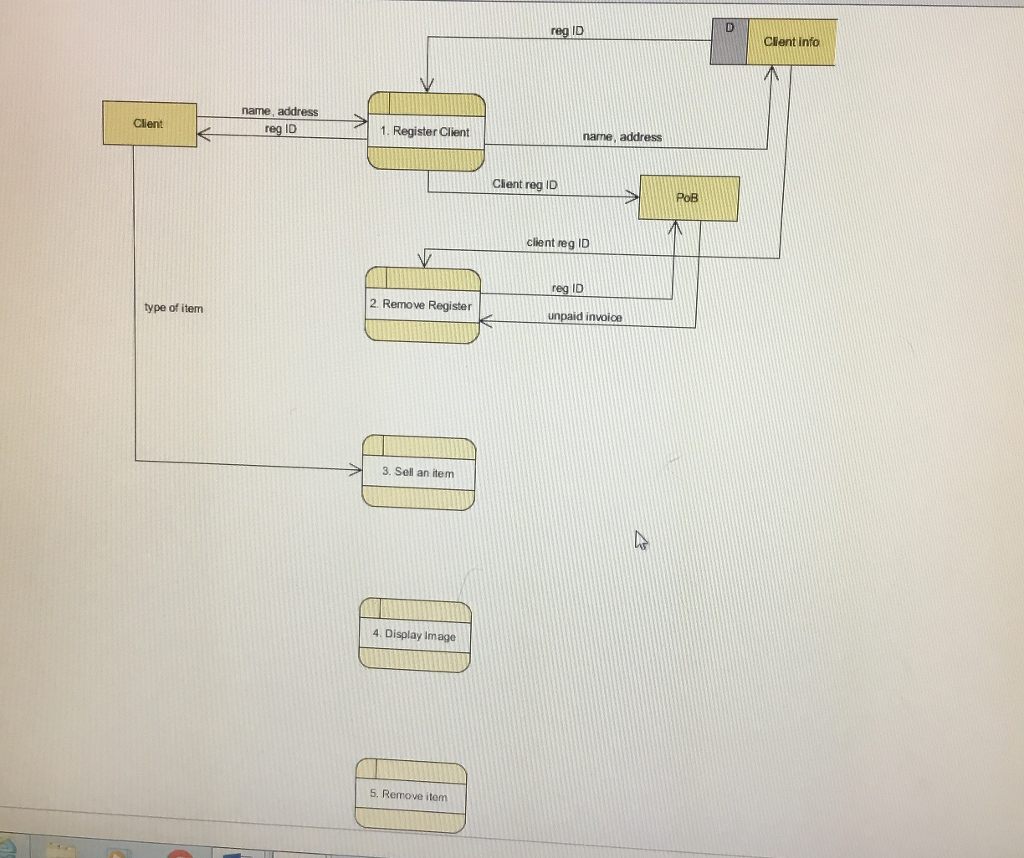Question
Draw Data flow diagram for the following case study Case Study: All Phones Shop (APS) System description: All Phones Shop (APS) is a company that
Draw Data flow diagram for the following case study
Case Study: All Phones Shop (APS) System description: All Phones Shop (APS) is a company that sells three types of phone: smartphone, normal mobile phone, and land phone. APS currently uses a small computer based system called PoB that manages the payroll of its employees, all payments made by clients, and the financial information of the APS client. PoB is actually a standard, commercial-off-the-shelf application. APS has two types of client: individual, and corporate. To buy or sell a phone, the client must first register if he/she does not have any registration with APS. In order to register, the client has to provide name and address. APS first checks if the client already exists. If not, the system creates a registration, assigns a unique registration number, PoB is advised by APS with the registration number. PoB then opens a financial account of the client with the registration number. All payments of the client are handled by PoB and recorded in the financial account. However, APS keeps only the registration information such as name, address, the registration number, the invoice(s) if the client has bought any item from APS, and the item information if the client sells any item. For all future sale and buy activities with APS, the client has to use the same registration number. A registration can only be removed by corporate clients. In this case, APS checks if there is any unpaid invoice attached with the client registration. PoB is informed if a client registration is removed. The individual client can only create registration but cannot remove any registration. APS does not handle any login operation, it is assumed all login functions are checked before any operation is executed. To sell an item, the client first selects the type of the item that he/she wants to sell. Under smartphone category, there are two sub-categories: Apple iPhone and Samsung Galaxy. The client then provides model, make, capacity, and color. The client has the option to sell the item either on auction (bidding), or on fixed price sale. For the auction, a starting price and the end of the auction time is specified; and for the fixed price sale, a price is given. For both types of sale (fixed price and auction), the system assigns an ID to the item, records and attaches the item information with the client registration. For the catalog entry, APS then automatically creates a display image based on the item description, asks the client (seller) to approve it, and displays the item for sale if approved by the client. Otherwise, the system re-creates another image, and displays it to the client for approval. Once the client approves the display image, APS includes it in its product catalog. Clients can also remove their items after display but before sale; in that case, a penalty of 10% of the starting price (for auction) or the fixed price of the item is charged to the client, and an advice on this penalty will be sent to PoB. Clients can also buy items on auction, or on fixed price sale. For the fixed price items, the client selects item(s). The system creates a shopping basket for the selected item(s). The system saves the shopping basket, and attaches this with the client registration. The client then checks out, and each item in the basket is considered sold, and removed from the product catalog. For auction, clients can bid a price for the selected item before the end of auction time. A bid submitted by a client must be greater than the last offered bid (price). All bids submitted by a client are recorded in the registration of the client. When the auction time ends, the client with last bid will be notified as the winner. The item is considered sold, and removed from the product catalog. For either type of sale, APS prepares an invoice (bill) based on the item(s). Once the client confirms the invoice, it is attached with the client registration with the status unpaid. For all payments, PoB informs APS with the client registration number and the invoice number. The system finds the invoice, and assigns the invoice as paid. If a client fails to pay to PoB within 7 days, a penalty of 10% of the price is charged to the client, an advice on this penalty is sent to PoB, and the sale is cancelled by APS. Task: Identify the major processes (functions) of the system along with the relevant external entities of the APS system.
reg 1D Client info name, address reg ID Client 1. Register Client name, address Cient reg ID PoB client reg ID ID 2. Remove Register type of itenm unpaid invoice > 3. Sell an item 4. Display Image 5. Remove item
Step by Step Solution
There are 3 Steps involved in it
Step: 1

Get Instant Access to Expert-Tailored Solutions
See step-by-step solutions with expert insights and AI powered tools for academic success
Step: 2

Step: 3

Ace Your Homework with AI
Get the answers you need in no time with our AI-driven, step-by-step assistance
Get Started


